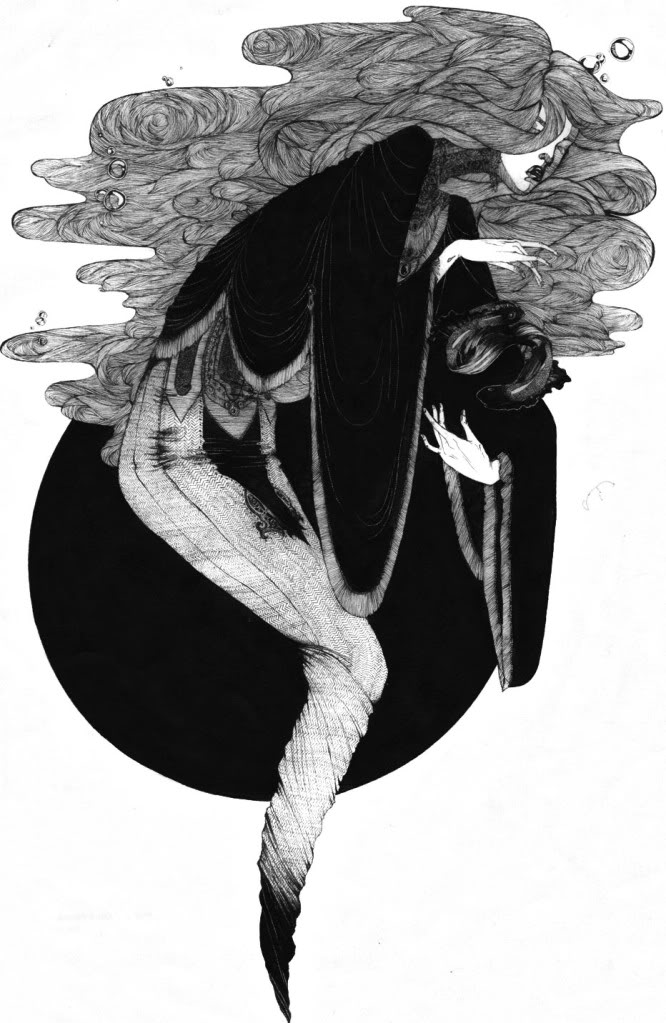b
Mia Calderone
Ghostly, sinuous, beautifully illustrated apparitions with elongated, eerie, torturously expressive wraith-like hands figure prominently in Mia Calderone’s exquisite and highly personal ink drawings. Her influences and inspirations include Catholicism, medieval illuminated Bibles, Art Nouveau (particularly Alphonse Mucha and Aubrey Beardsley), and contemporary artists Takato Yamamoto and Laura Laine.
